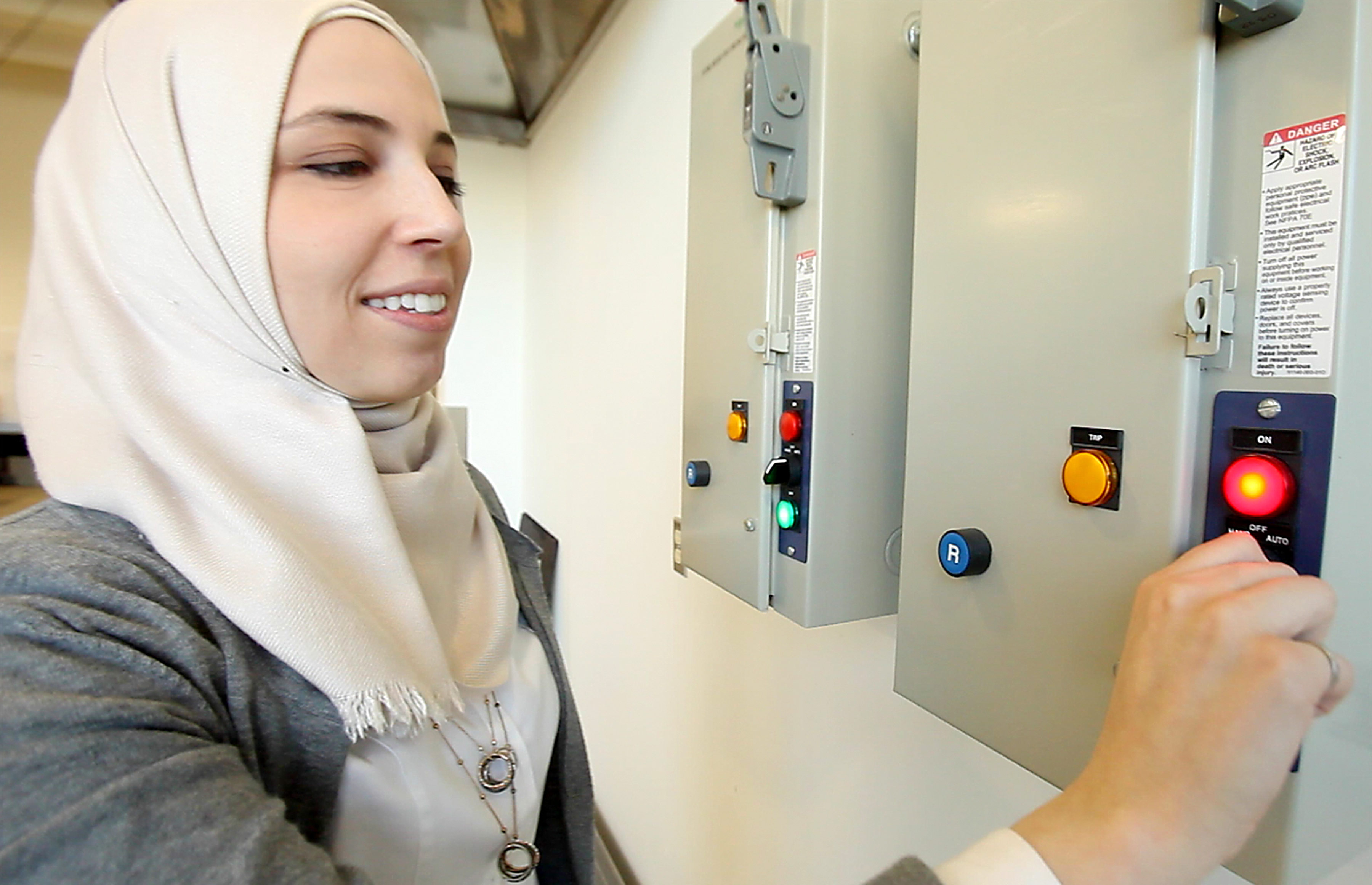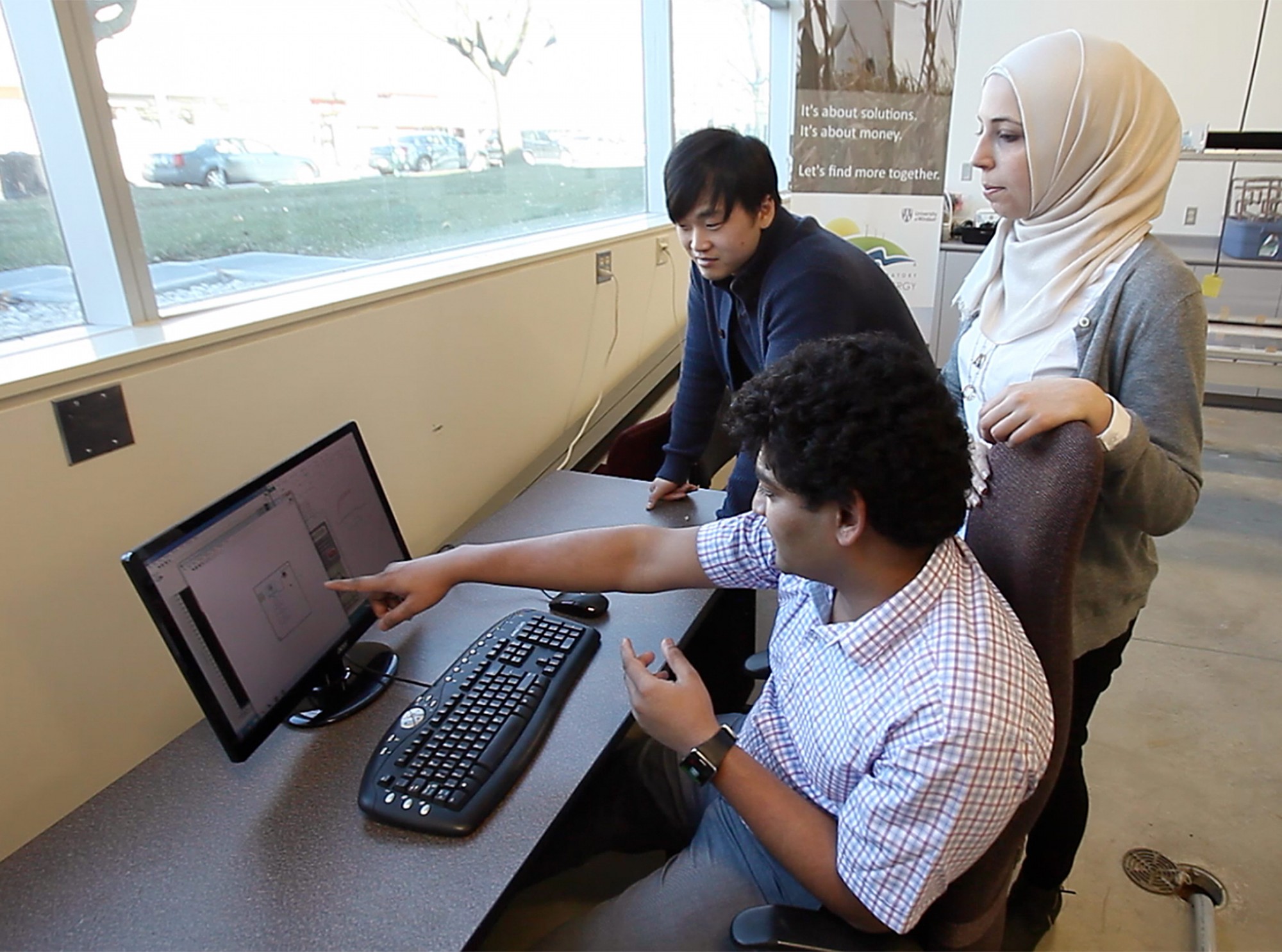
A UWindsor team of student engineers has built a natural gas powered engine in hopes of reducing the environmental footprint of commercial and residential buildings.
The group was invited to share its project with hundreds of students and academics from across the world at the American Society of Heating, Refrigerating and Air-Conditioning Engineers (ASHRAE) Winter Conference on Jan. 24, in Orlando, Florida.
 “Our project encourages sustainable practices and in the long term, other students will benefit from what we’re studying,” said Sara Alhasan, who represented the team alongside Nam Kang, a third year mechanical engineering student.
“Our project encourages sustainable practices and in the long term, other students will benefit from what we’re studying,” said Sara Alhasan, who represented the team alongside Nam Kang, a third year mechanical engineering student.
In 2015, the team received an ASHRAE Senior Undergraduate Project Grant, which is awarded to schools worldwide. As one of the top two grant applicants, two UWindsor team representatives received an all-expense paid trip to the ASHRAE conference in Orlando to deliver a 10-minute presentation and short video about their project.
Alhasan said the $4,900 ASHRAE grant allowed them to familiarize themselves with power generation and build a lab scale engine that uses cogeneration — the simultaneous production of electricity and heat. A natural gas burner powers the engine, which then produces electrical and/or mechanical power. The waste heat can be used to heat air and water. After the project is completed in the summer of 2016, the engine will be used to help educate future engineers.
“The importance of this Grant is the opportunity it offers students to increase their knowledge of HVAC&R through the design and construction of senior projects,” said Robyn Ellis, chair of ASHRAE’s grants subcommittee. “Students are the future of ASHRAE and the future of the HVAC&R industry.”
ASHRAE is a global society that aims to advance human well-being through sustainable technology for building systems, energy efficiency, indoor air quality and refrigeration.
Project advisors include UWindsor professors, Dr. David Ting and Dr. Graham Reader and Prashant Prandip, a graduate student in mechanical engineering. Click on the video above or visit the UWindsor Engineering YouTube page to watch a video the team presented in Orlando.
